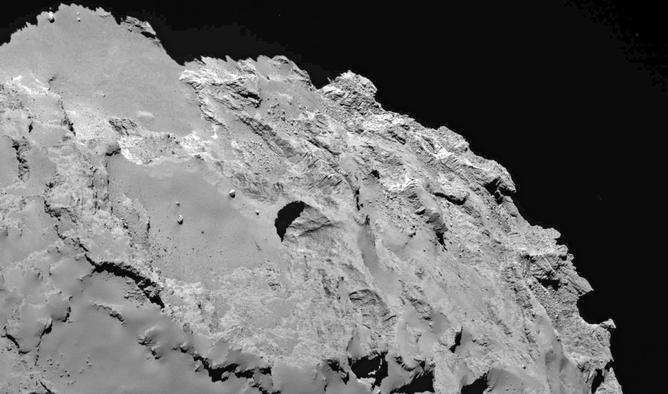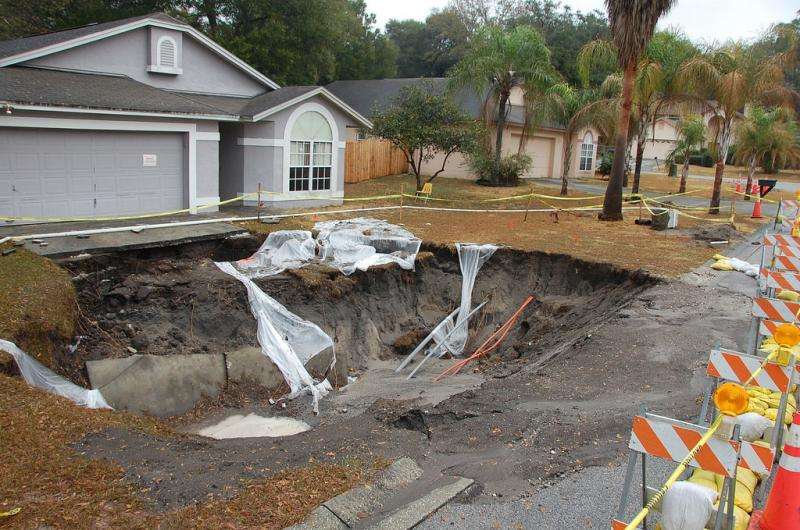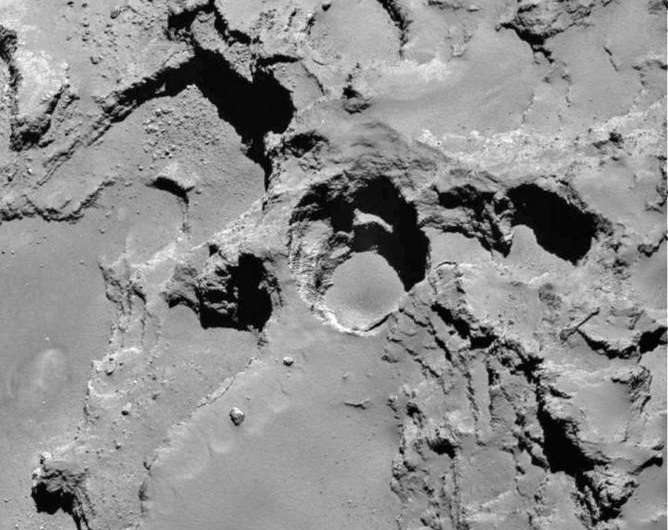Could sinkholes on 67P/Churyumov-Gerasimenko pose yet another risk to Philae?

Images of the surface of comet 67P/Churyumov-Gerasimenko have been decorating the front pages of newspapers and journals for the last few months. They have allowed us to see the full magnificence of the comets' cratered terrain. Now a study suggests that these craters are actually sinkholes, created in a similar way to those on Earth when the surface layer of the ground suddenly collapses. While these pits could help us map the terrain of the comet, they could also pose a risk to the Philae spacecraft.
As the comet moves closer towards the sun, its activity has increased, leading to greater amounts of material from the exterior being turned into gas through the process of sublimation (where solid turns to a gas without first turning to liquid). It is clear, though, from the images of the navigation camera, that 67P is not equally active across all of its surface, and that jets of gas and dust can appear very quickly in sudden bursts of activity. This is not consistent with a gradual erosion of ice from across the comets' surface as temperature increases.
The high resolution camera, OSIRIS, has shown panoramic images of craters, crevasses and valleys on the comet – including craters from which jets are emanating. That these are instead sinkholes is interesting but also slightly worrying, as such pits have the awkward habit of opening up in the most inconvenient of places at the most inconvenient of times.
The science of sinkholes
Sinkholes are caused when (usually) water washes away sub-surface rock and sediment, leaving a cap of material above a cavern. The cap can collapse at any time, becoming particularly vulnerable in times of increased rain or flooding.
The researchers believe that sinkhole formation on 67P may be a consequence of sudden collapse of a ceiling overlying a buried cavity. They speculate that the cavities might have formed by collisions between metre-sized bodies at slow speeds, early in the Solar System's history. Alternatively, they might be caused by sublimation of subsurface ice.

Whatever the cause of the underlying cavities, images from OSIRIS show that clusters of sinkholes with different depths and diameters across the surface of 67P. After the ceiling of a sinkhole has collapsed, fresh surfaces are exposed to solar radiation, following which jets form by sublimation of ice from the walls of the freshly opened hole.
Newly-formed, active sinkholes are deeper and have narrower diameters than ancient, dormant ones. If we could peer down into one of these holes, we would probably see layers of rock and ice, gradually becoming darker as more of the ice sublimated – leaving rock and dust behind. Dormant holes, on the other hand, seem to be filled in with debris, presumably of dust and rock from the sides of the hole which have collapsed.
What is intriguing about the sinkholes is the opportunity they provide to determine the regional geology and history of 67P's surface.Sinkholes on similar terrain have similarly-sized holes. That means we can map the entire terrain of the comet based on the size of these pits. Similarly, the depth of sinkholes also matters. Since more shallow and debris-filled sinkholes tend to be older than deep ones, we can establish a chronology based on the depth.

What we all have to hope is that Philae is not perched precariously on the ceiling of one of these sub-surface cavities. It would be too cruel if the increasing sunlight, finally charging Philae's batteries, also removed the ice supporting the lander, leaving sufficient power for Philae to broadcast its last message: "Help, I'm falling…"
Provided by The Conversation




















